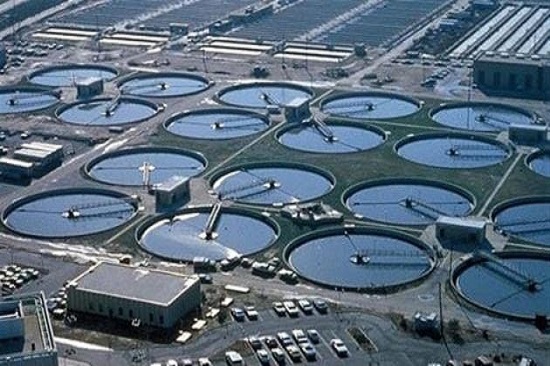| News Details |
Biological treatment of contaminated water
2024-01-20

Assistant Professor Dr. Hala Arshad Ali
Upper Euphrates Basin Developing Centre – University of Anbar
The importance of water lies in the fact that there is no corresponding substance in terms of physical and chemical properties, and no artificial alternative can be synthesized or replaced, Water is one of the most important inputs in the production of energy and in the sources of industry, agriculture and medical services, and that urban expansion and the increase in population growth and the development of industry led to more consumption of fresh water, which led to an increase in the subtraction of contaminated domestic, industrial and health water in fresh water, which caused the emergence and exacerbation of the problem of water pollution. The changes that occurred due to the additions of all human activities to the environment, including liquid waste, lead to a significant change in the specifications of fresh water, which are The most suitable source of human needs, The World Health Organization indicated that more than one billion people are deprived of clean water, while (3.4) million people die every year from diseases that can be avoided if there is a safe water supply and ways to maintain public health, stating that water is responsible for (4.6%) of all deaths and (5.7%) of the total number of diseases that occur in the world. In recent years, interest has increased in the study of pollutants resulting from sewage units, which are a major cause of water pollution as well as other sources (factories, laboratories and hospitals) because they negatively affect the physical, chemical and biological properties of water, which prompted industrially developed and developing countries to pay attention to the treatment of huge quantities of domestic, industrial and health liquid waste before disposal, recycling and use it through the development of the techniques used and the transition from traditional methods to methods that work according to methods Advanced treatment The biological treatment (biologic) is one of the distinct methods to reduce the liquid pollutants posed and is carried out using some types of fungi and strains of bacteria and algae that have the ability to decompose organic matter in wastewater and absorb heavy metals as well as nitrogen and inorganic phosphorus in addition to the use of plants in treatment such as some aquatic plants such as hyacinth water and water lentils, which collect and accumulate toxic substances and heavy metals by absorbing them through the roots.
The mechanism of biodegradation depends on the presence of living organisms (such as fungi, bacteria, algae and primitives) with the ability to grow and reproduce in contaminated areas to decompose (metabolize) organic pollutants in soil, water or groundwater into harmless final products where microorganisms absorb mineral elements to provide what they need in their physiological processes by the process of metallization and the element turns into an easy metal image and the processes take place either by the method of abiotic absorption where the exchange takes place in the cell wall and does not need To energy, or the method of propagation, where it passes through the difference in concentration, and the other influential factor is that bacteria contain plasmids that carry genes responsible for the biodegradation process, as the susceptibility of bacteria to be analysed increases with the increase in the number of plasmids, and these organisms are:
(Pseudomonas, Acinetobacter, Mycobacterium, Aspergillus, Alternaria, Trichoderma, Fusarium)
Bioremediation occurs with three basic processes:
1. A small and easy change in these organic compounds.
2. Fractionation of hydrocarbon chains into parts while retaining the chemical composition of the base compound before fragmentation.
3. Mineralizing organic parts and changing their composition from organic molecules to inorganic molecules.
The biological oxidation process is affected by several factors, the most important of which are:
1. The abundance of microorganisms that can carry out the biodegradation process in the marine environment.
2. The amount of oxygen dissolved in water.
3. Water temperature, the warmer the water the better to complete the bio oxidation process.









